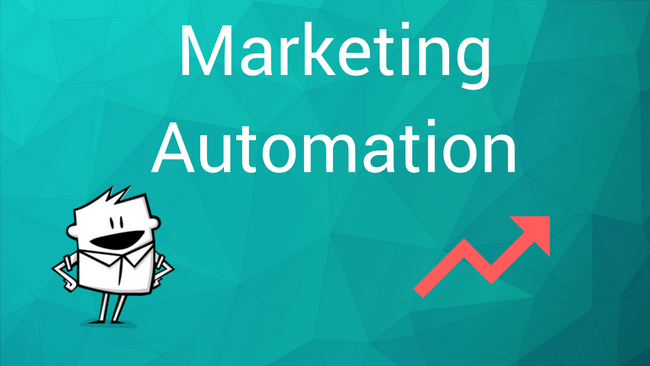Most Important KPIs in Marketing Automation

There is no efficient marketing campaign without measuring its results. Every action should be checked to allow conclusions about the current campaign and to design converting actions for the future. Marketing automation allows for very precise targeting of users and paying customers. All these actions are not however floating in space; a campaign has its goals. KPIs are responsible for measuring the campaign’s effectiveness.
Key performance indicators (KPIs) are useful only when you have a large enough user base and can draw conclusions based on their behavior.
There are four types of performance indicators. They represent different stages in the sales funnel:
· Acquiring indicators – describe new contacts
· Engagement indicators – describe how much users and paying customers to identify with the brand, engaging themselves in activities offered by the application
· Conversion indicators – describe actions that guide users deeper into the customer’s journey
· Retention indicators – describe how much the user is loyal to the brand and how long can you keep him as a paying customer
There are dozen of main KPIs for all four indicators.
Acquiring indicators:
· A proportion of active contacts to inactive ones and their number. Without gathering a sufficient number of active accounts, you can’t measure the campaign effectiveness. Active users turn inactive after some period of time is a normal thing. Large traffic and activity from active users shows you that they can be ready to become paying customers or already are and expect a larger offer
· A qualification indicator for potential customers. There’s a difference between gathering leads and qualified leads. Qualified leads are users that are in our target group and are ready to buy products and services. People that are qualified leads are interested in spending money and with the right level of care, word-of-mouth your product to another potential customer (prospects)
Engagement indicators:
· Engagement indicator. Here we can measure user’s engagement in the campaign. Clicking on the button, coming to the website through a landing page, form filling, file download, etc. In practice, this indicator looks like this: a whole number of interactions divided by a number of all engaged contacts. You have to remember that this equation gives us some value but it doesn’t show a quality of engagement. You shouldn’t draw deep conclutions from this information alone. It’s worthless without the context
· Click-through rate (CTR). This equation goes like this: a number of interactions with call-to-action (CTA) button divided by a number of its displays for all of its recipients. A low CTR can mean one of two things: a CTA button is not displayed properly and the visitor can’t see it right away or he’s not sure about the quality he’ll receive after clicking it
· Form filling indicator. There are a lot of mistakes when designing internet contact forms. The form should be as short as possible – one field for a name and a surname, one for a contact email, one for a phone, and an agrément for processing personal data in a form of a checkbox. That’s it. In most cases, this should be more than enough to gather basic information about the user. The rest will come naturally from the user himself when you establish a business relationship and the customer will believe in your offer. He will do that by traveling through your applications. A form that is too long and requires too much information about the user is strange and scare off people. If I want to download an ebook, why there’s a need for my phone number? If I want to subscribe to a newsletter, why do you need my age and my hometown? This kind of data can be harvested with tools for Big Data or from the context, drawing from user’s usage of the application. Harvest only basic data.
· Email open rate. Emails even carefully crafted cold emails, can still be a valuable communication tool and attract people to contacting the brand. The moment of opening the email and the moment of action from the user is proof that the campaign is though-out and effective. Today, an email is a marketer’s minefield. People don’t like spam in any shape or form, and email blasts are a very easy way to create one. If a given campaign can generate an open rate of 10%, you can call it a day – it’s a success
· The day of the last interaction. It’s a really mentioned indicator. It helps you understand when the user performer the last action related to a brand. If it was longer then a few weeks ago and your brand relies on interactions, analyze the user’s behavior and check if the last few weeks didn’t bring more ‘goodbyes’. It could be a sign that your communication, campaign or even entire offer is no longer attractive
Conversion indicators:
· A contact – a potential client. A contact is a person that subscribed to a newsletter. A potential client (prospect) is a person that actively browses your offer. A conversion indicator shows how effective is your method for reaching contacts, how effective communication and how good the design of your offer.
· A potential client – a client. Contrary to a popular belief, this indicator shows not what you’re doing right but what you’re doing wrong. If everything went wrong last time around, you should have a lot of clients. If it’s not the case, then a potential client is not interested in buying. Maybe the price is not attractive? Maybe navigation in your application is not good enough? Maybe clicking a button to watch a movie doesn’t make sense because the user have only three minutes of free time, not ten? There is a large number of similar permutations, this indicator can help you find them.
Retention indicators:
· Customer acquisition cost. The cost of a marketing automation tool, the cost of an email marketing tool, the cost of integration of marketing automation software with previously used tools… The number of costly activities can be really high. That’s why it’s important to keep all costs at bay and use a tool that has all dedicated solutions ‘under one roof’. It would be great if a tool has all these mechanisms, interconnecting and supporting each other, with detailed reports flowing regularly.
· Revenue per campaign. This is a crucial indicator, showing the effectiveness of the campaign. Sum up all the costs and compare to the revenue
· Marketing automation return on investment. You can buy any marketing automation tool, there are thousands of them. Only some of them offer a complete toolset for main industries. Marketing automation is effective only when based on the knowledge and skills of the tools’ designers. Support also matters.
KPIs in marketing automation allows for the creation of more effective and engaging campaigns. Design and measure them with a trusted tool for marketing automation.



